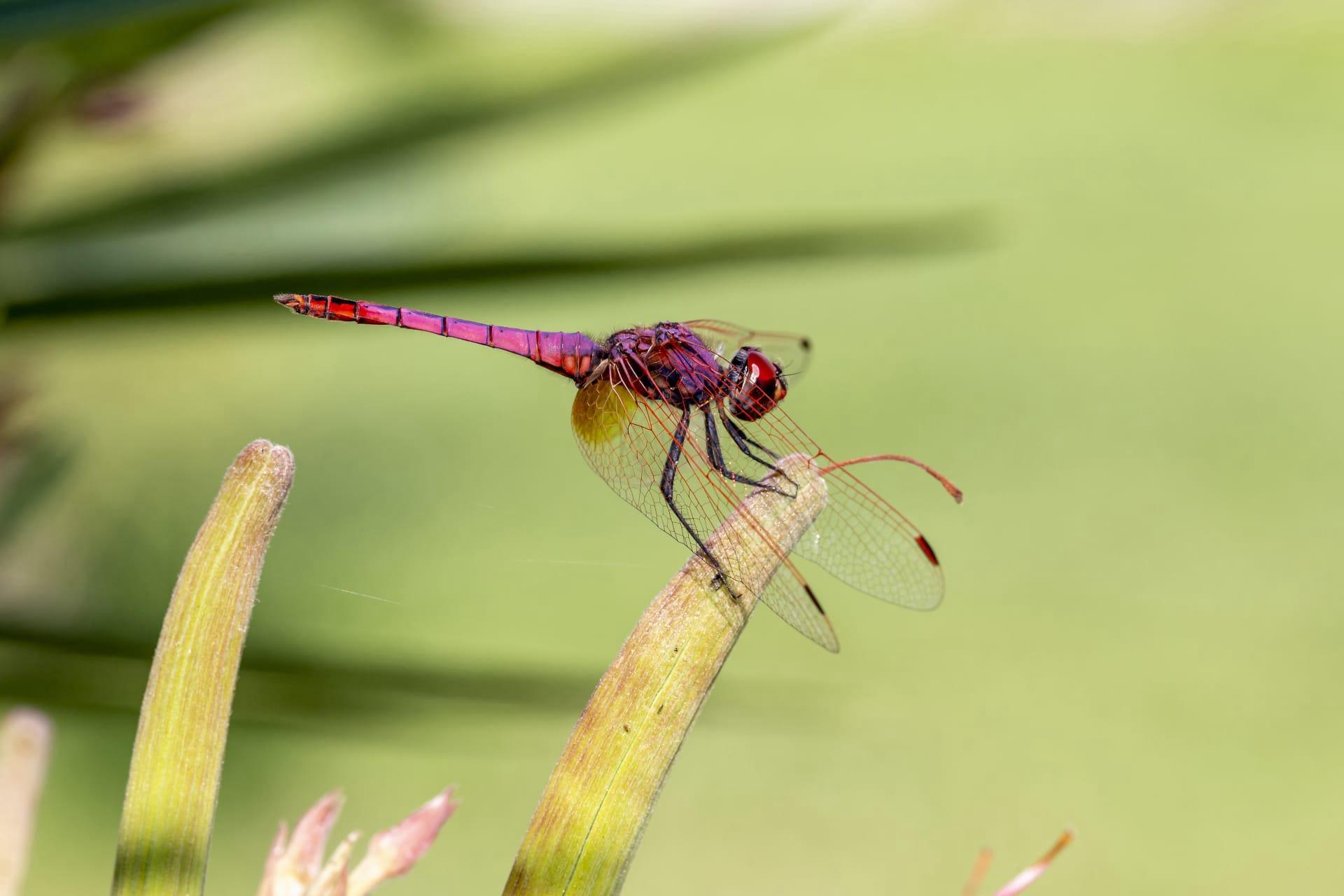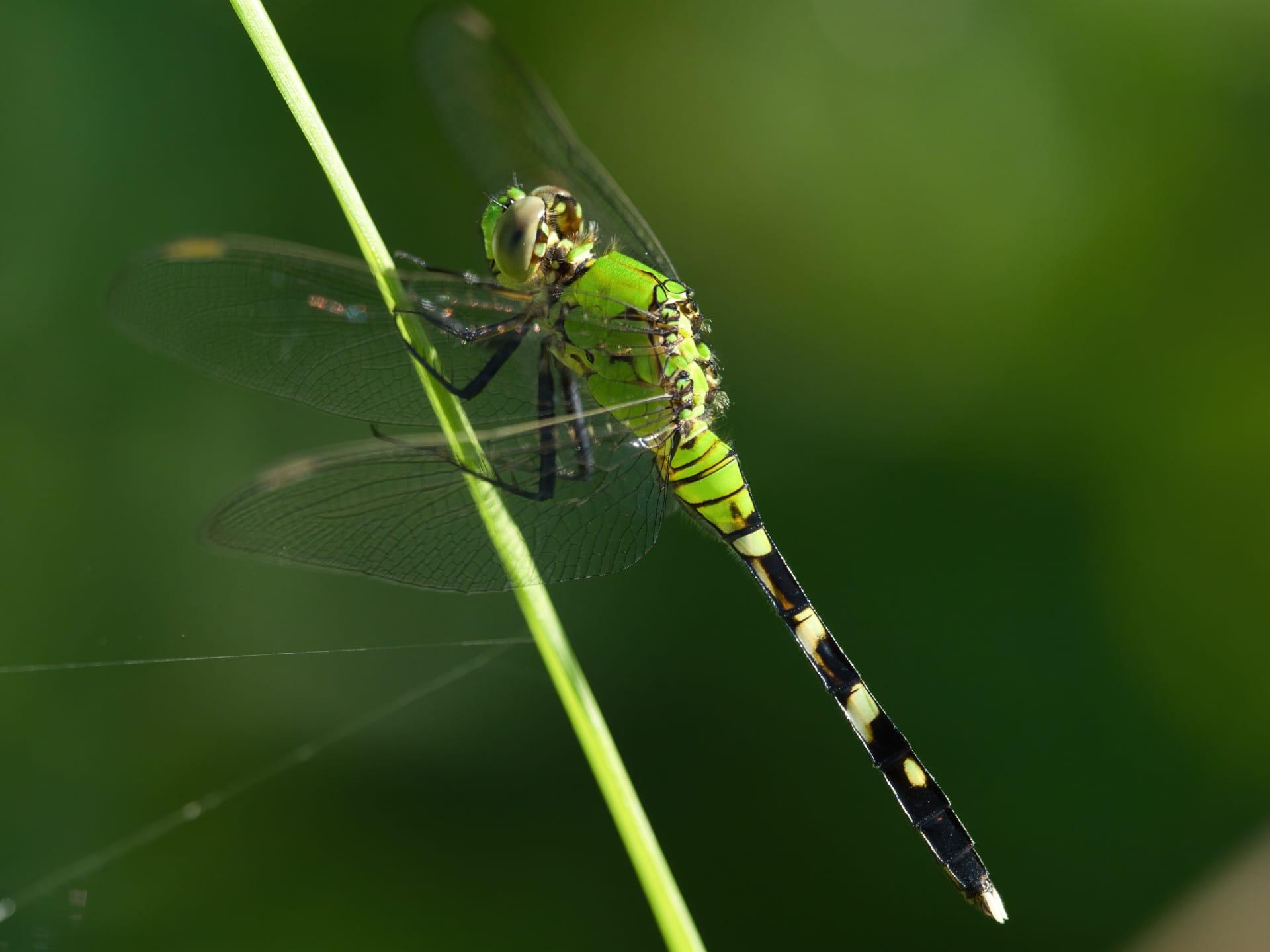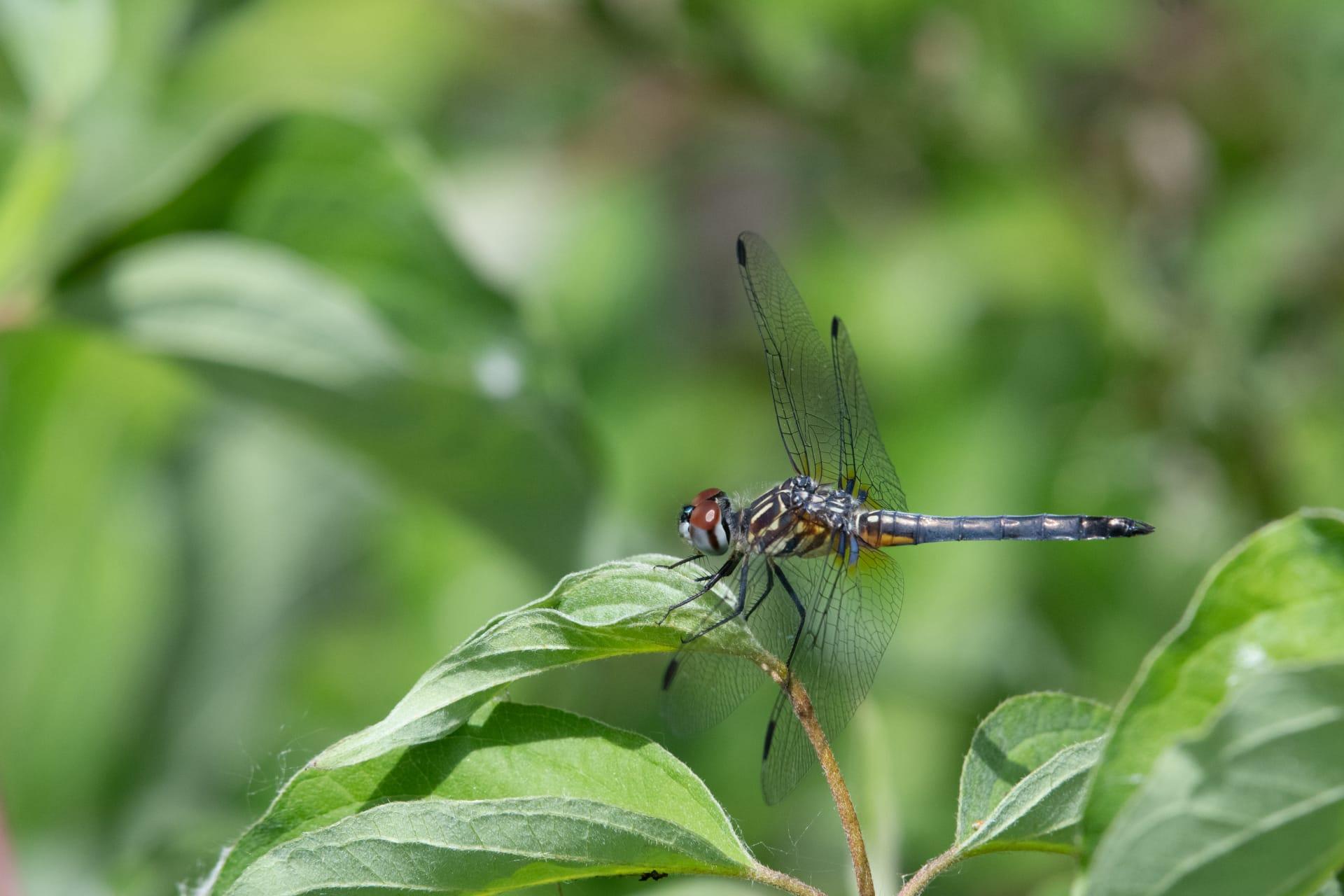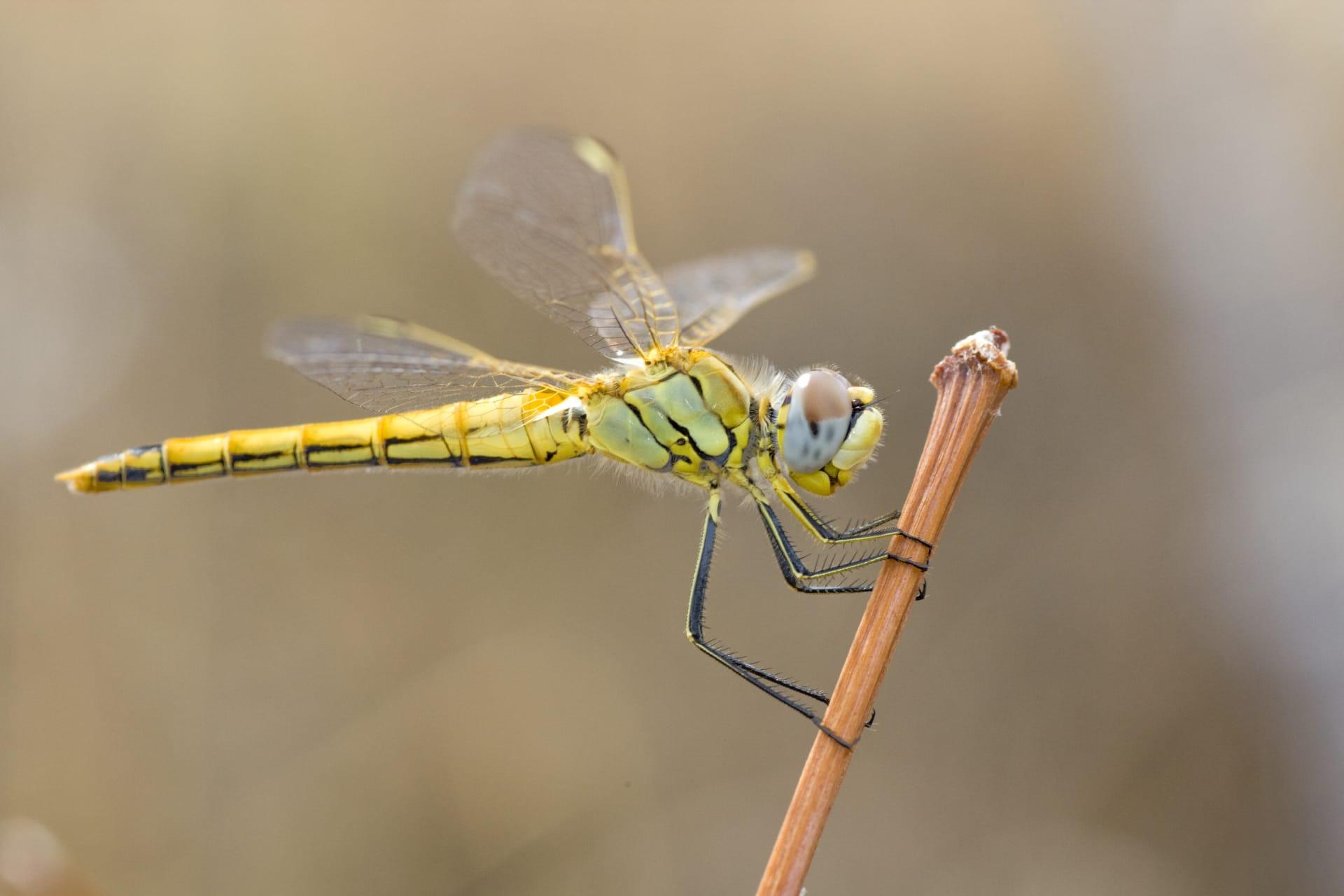Dragonfly Characteristics
- Home /
- Mini Encyclopedia /
- Animal /
- Dragonfly Characteristics
1
Dive into the world of dragonflies, and you'll find creatures that are marvels of engineering and elegance. With slender bodies that can range from 1 inch to over 4 inches in length, these aerial acrobats come in a kaleidoscope of colors, from the deepest blues to vibrant greens. Their lifespans are a testament to their resilience, with a fascinating journey from egg to adult. Most species spend the majority of their lives as underwater nymphs for up to five years, but once they emerge to grace the skies, their adult life is a fleeting masterpiece, lasting anywhere from a few weeks to several months.
One of the most captivating features of a dragonfly is its eyes. These are not just any eyes; they are compound eyes, composed of up to 30,000 individual lenses! This incredible adaptation allows them to have a near 360-degree field of vision. This panoramic view is crucial for a predator that relies on its exceptional sight to detect movement and hone in on prey. The accuracy and efficiency with which they can spot, track, and capture their targets are unparalleled in the insect world, making their hunting success rate one of the highest.

2
Question: How can dragonflies fly in six different directions?
Answer: Dragonflies are the masters of the sky, capable of flying not just forwards but backwards, up, down, and side to side, thanks to their extraordinary wing design. Each of their four wings operates independently, allowing for precise movements and sudden changes in direction. This incredible agility is powered by muscles in the dragonfly's thorax, which can adjust the angle and tilt of each wing with remarkable precision. This ability not only makes them efficient hunters but also hard to catch, making dragonflies one of nature's most agile fliers.

3
Dragonflies are the daredevils of the insect world, showcasing flight capabilities that put even the most advanced aircraft to shame. With two sets of wings that can beat independently or in unison, they can hover like helicopters, dart with the speed of a bullet at up to 35 miles per hour, and even pull off mid-air pirouettes. This aerial prowess is not just for show; it's an essential part of their predatory lifestyle, allowing them to outmaneuver prey and predators alike.
When it comes to dining, dragonflies are not your average insect. They use their exceptional flight skills to catch prey right out of the air, with a success rate that would make any predator envious. Equipped with legs that form a basket-like structure, they scoop up their unsuspecting victims with ease. This method is incredibly efficient, enabling them to feast on a buffet of flying insects, from mosquitoes to butterflies, making them invaluable allies in controlling pest populations.

4
Dragonflies are intimately connected to aquatic environments, relying on freshwater habitats like ponds, lakes, and streams for their survival. The nymphs, or juvenile dragonflies, are aquatic predators, thriving in clean, unpolluted water where they hunt for small aquatic organisms. This dependency makes dragonflies excellent indicators of water quality, as they are often found in abundance in healthy aquatic ecosystems but are scarce or absent in polluted ones.
The dance of dragonfly reproduction is as fascinating as their flight. Males stake out territories over water, engaging in aerial battles to defend their domain. After mating, the female lays her eggs in or near water, often while in flight. The eggs hatch into nymphs, which will spend months or even years underwater, undergoing numerous molts before emerging as adults. This transformation from water-bound nymph to aerial adult is a remarkable process, showcasing the dragonfly's adaptability and resilience across different environments.

5
Book: "Dragonflies: Magnificent Creatures of Water, Air, and Land" by Pieter van Dokkum. Originating from the Netherlands, this book was published in the early 21st century and offers a comprehensive look into the dragonfly's world. Van Dokkum, an astrophysicist with a passion for photography, combines stunning visuals with insightful commentary, detailing the life cycle, anatomy, and ecological importance of these fascinating insects.
Book: "The Dragonfly's Journey" by Heather Angel, a British wildlife photographer with a keen eye for detail. Published in the late 20th century, this book takes readers on a visual and informative journey through the life of dragonflies, from their time as water-bound nymphs to their transformation into airborne adults. Angel's work highlights the beauty and complexity of dragonflies, emphasizing their role in various ecosystems across the globe.